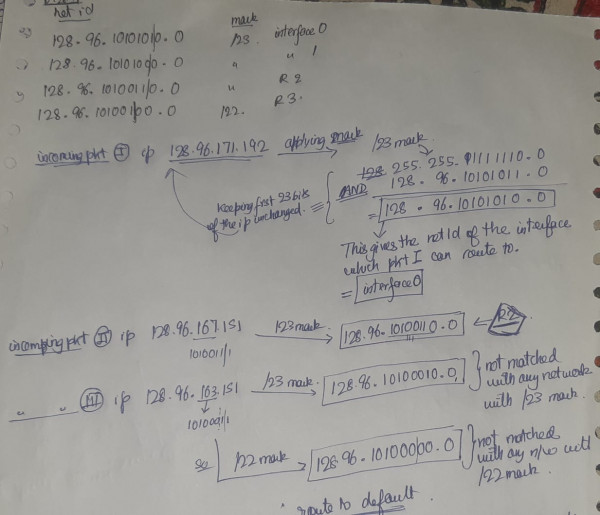@Sachin Mittal 1 sir i thnk
(I) is not a valid address space
Reason:-
Let’s first see, from routing table,how to decide which interface an incoming packet will be routed to?
- we basically do AND ops between the subnet mask of the interfaces and the incoming packet's IP,
the result of this AND is the network id of the interface when the packet should be routed.
Below is a an example of this

now, let's go back to our qstn
(I)'s address space =$202.61.84.0/21$
=$202.61.01010 |$ $100.0$ (with /21 subnet mask)
Now, as per the qstn any IP inside the address space $202.61.0.0/17$ can be a valid IP(cuz the organisation request for IP to the ISP,which serves the requests from the available IP address space 202.61.0.0/17 ),so any incoming packet having IP addresses inside this address space should be routed to the organisation .
But see in the below photo, a packet came with ip $202.61.01010$ $111.0/21$ [this is inside the 202.61.0.0/17 address space], but it cannot be routed to (I)'s address space!!, cuz after the AND ops, the network id won't match(i think this happens due to this 1 [ 202.61.01010 |100.0 ] inside (I)'s address space)
Thereby we can say no valid packet can ever be routed to (I) address space
NB:- I also set that 6th 1 in 3rd octet to 0, i.e 202.61.01010 | 000.0 (with /21 subnet mask),which i denoted as interface B, now and any valid packet can route to (I) address space
